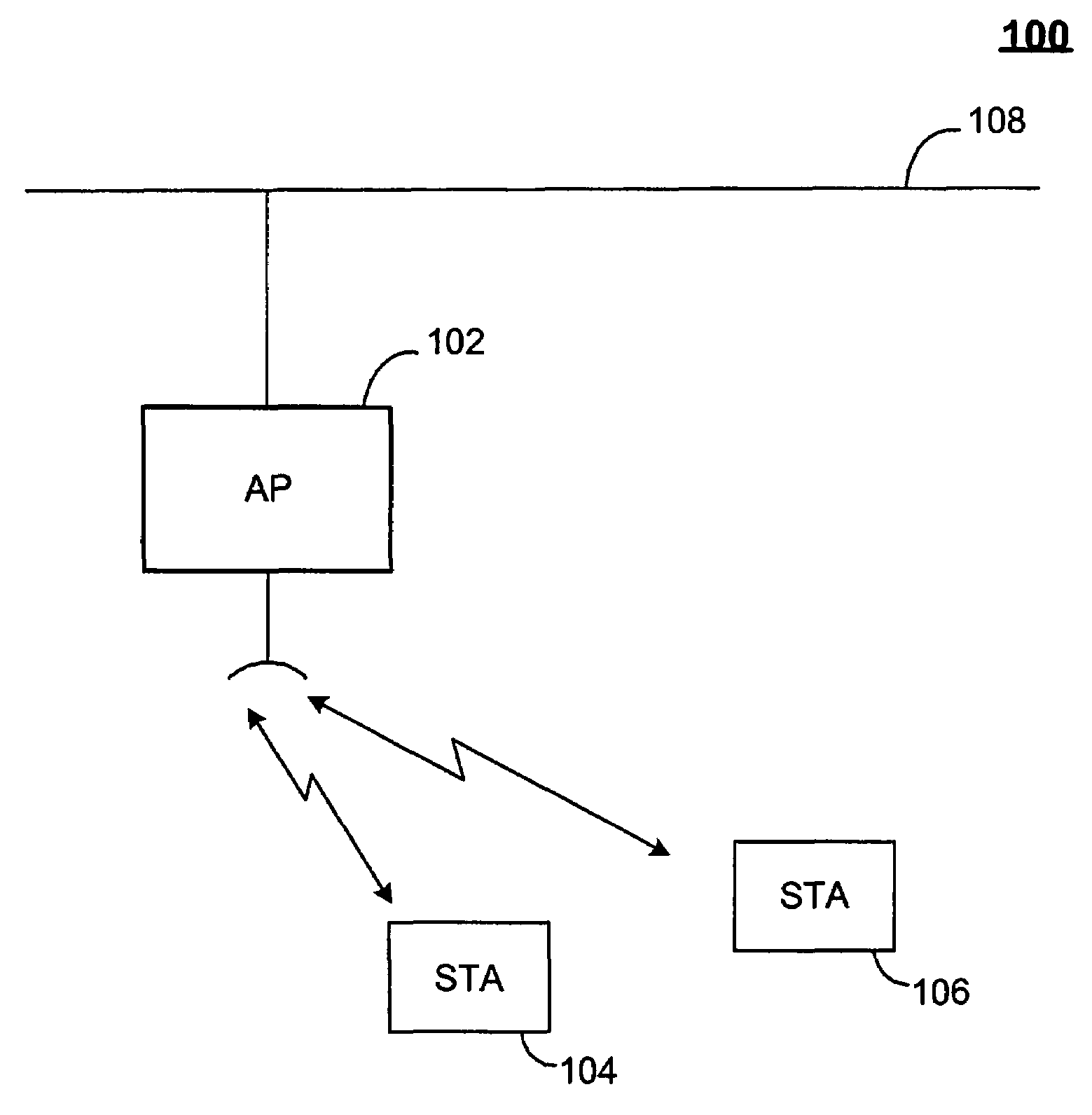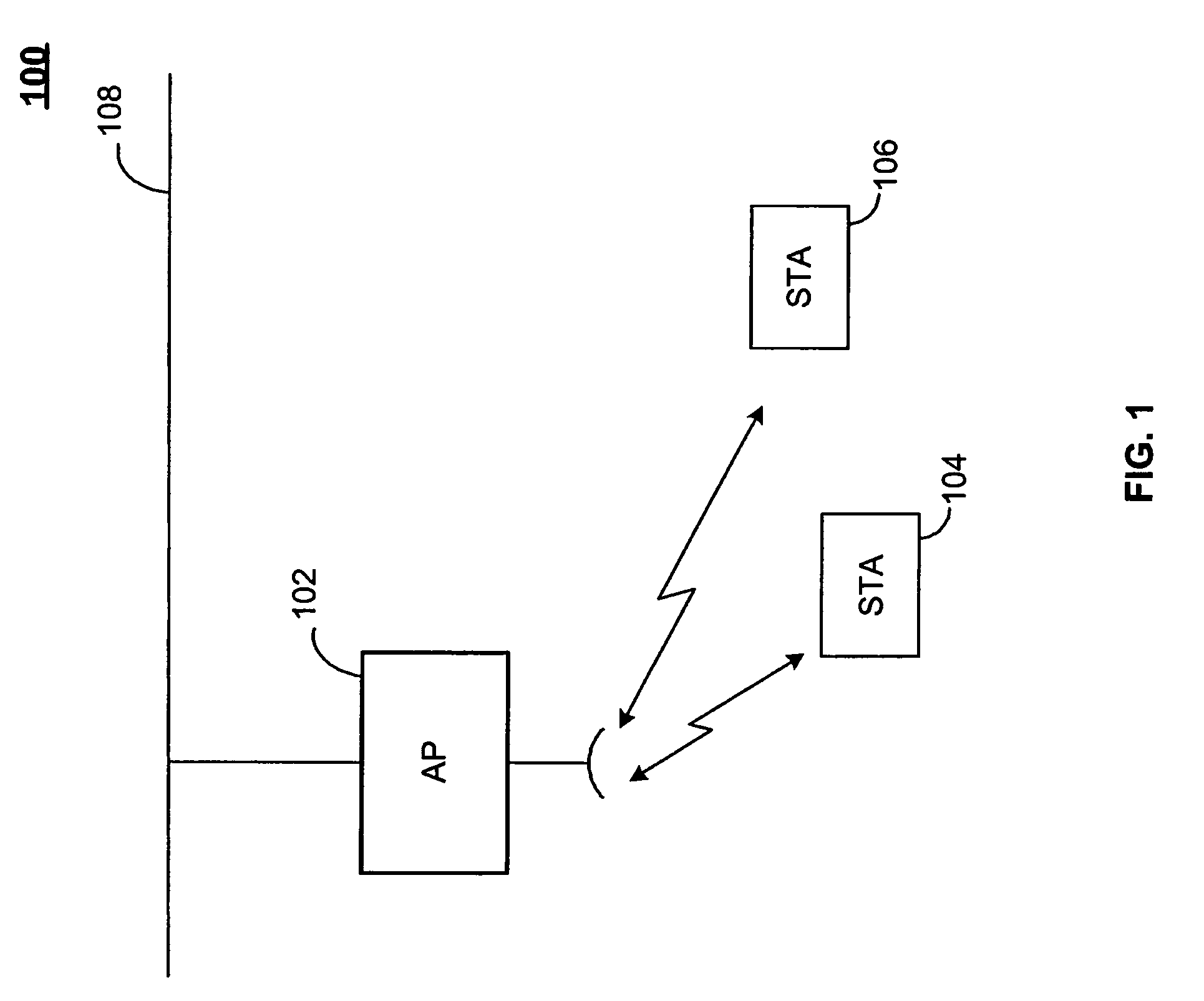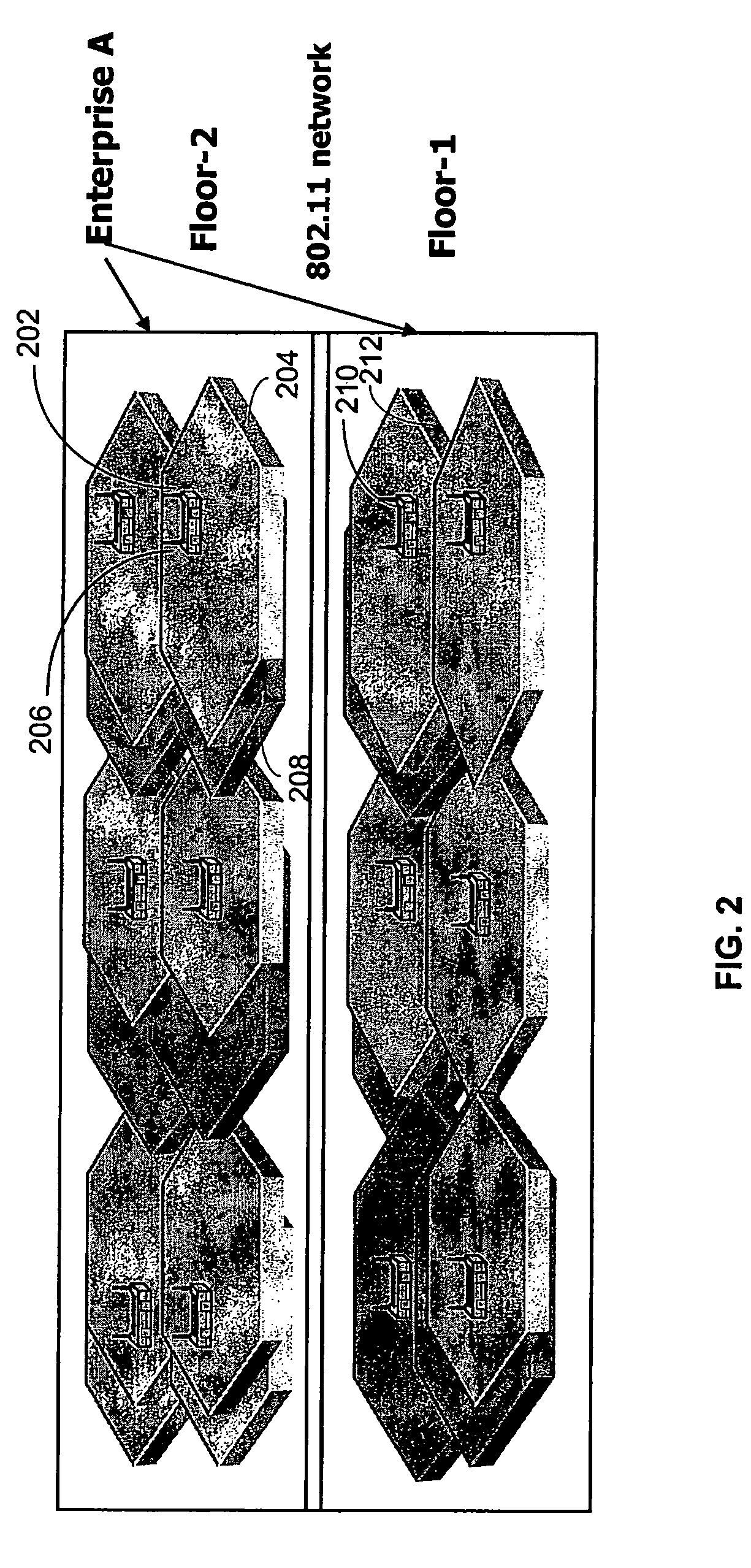Capacity management for wireless local area networks
a technology of capacity management and wireless local area networks, applied in wireless communication services, wireless commuication services, electrical equipment, etc., can solve the problems of increasing the likelihood of interference caused by neighboring ap devices, and overcrowded frequency channels over which wireless communications take place to support wlans
- Summary
- Abstract
- Description
- Claims
- Application Information
AI Technical Summary
Benefits of technology
Problems solved by technology
Method used
Image
Examples
Embodiment Construction
I. Dynamic Frequency Selection
[0018]FIG. 2 depicts an illustrative scenario of planned wireless network development and growth. Here, a single tenant referred to as Enterprise A occupies multiple floors of an office building. On each floor, multiple AP devices may be deployed to implement one or more wireless local area networks. Here, an AP device refers broadly to a device that is capable providing network access to one or more station (STA) devices in a wireless local area network. An AP device may be implemented using a combination of hardware and / or software. AP devices are not necessarily restricted to one or more physical modules. For example, there may be multiple AP devices contained in a single physical module. As it is known in the art, a physical module commonly referred to as an “access point” may actually include two or more separate radio communication units, each capable of communicating on a different radio frequency channel. It should be understood that an AP devic...
PUM
 Login to View More
Login to View More Abstract
Description
Claims
Application Information
 Login to View More
Login to View More - R&D
- Intellectual Property
- Life Sciences
- Materials
- Tech Scout
- Unparalleled Data Quality
- Higher Quality Content
- 60% Fewer Hallucinations
Browse by: Latest US Patents, China's latest patents, Technical Efficacy Thesaurus, Application Domain, Technology Topic, Popular Technical Reports.
© 2025 PatSnap. All rights reserved.Legal|Privacy policy|Modern Slavery Act Transparency Statement|Sitemap|About US| Contact US: help@patsnap.com



